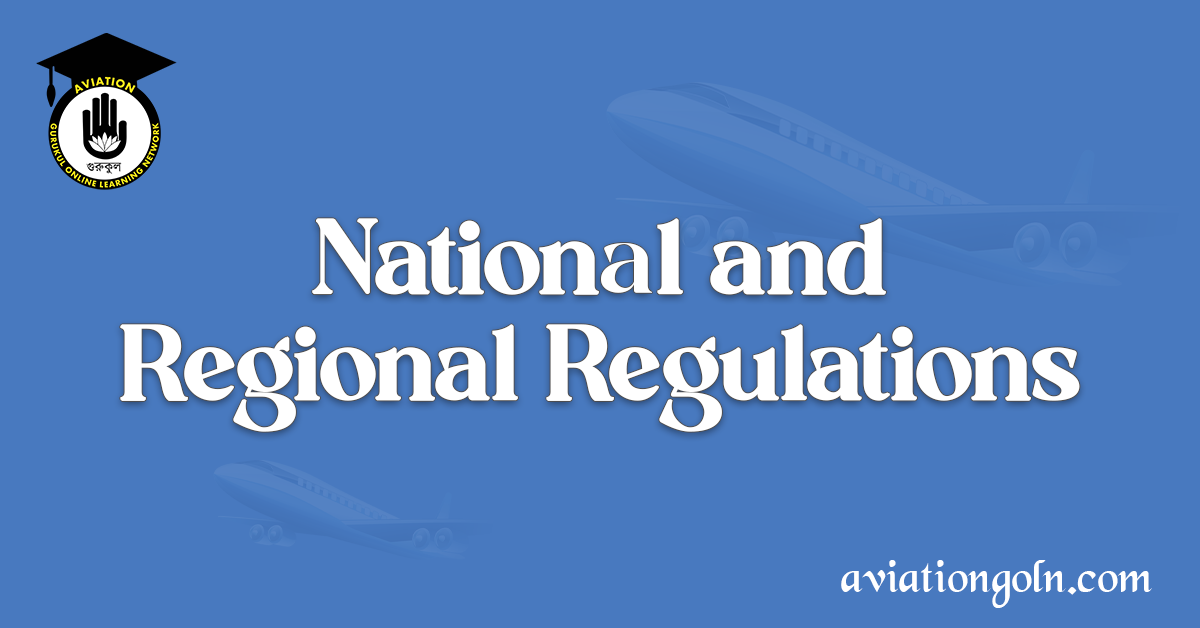National and Regional Regulations: The aviation sector is one of the most complex and regulated industries in the world. A crucial part of this regulation centers on the Aeronautical Information Services (AIS), which provide vital information to the aviation community to ensure safe, efficient, and orderly operations. National and regional regulations establish AIS standards to which countries must adhere, promoting consistency and reliability in the information provided to operators. This article delves into the intricacies of these regulations and their significance for the aviation industry.
National and Regional Regulations: Aeronautical Information Services Standards and Regulation

1. The Significance of Aeronautical Information Services (AIS)
AIS provides data and procedural information necessary for the safe and efficient conduct of national and international air navigation. This encompasses information about airports, airspaces, obstacles, routes, and meteorological data. The accuracy, timeliness, and reliability of this information are of utmost importance.

2. International AIS Standards
The International Civil Aviation Organization (ICAO), a specialized agency of the United Nations, sets international standards and regulations for aviation, including AIS. Annex 15 to the Convention on International Civil Aviation (Chicago Convention) deals specifically with AIS and prescribes the standards and recommended practices (SARPs) related to its provision.
2.1 ICAO Annex 15
Annex 15 stipulates how aeronautical information should be collected, managed, and disseminated. This encompasses:
- The establishment of Aeronautical Information Publications (AIPs)
- The regularity and format of Aeronautical Information Circulars (AICs)
- The content and distribution of NOTAMs (Notices to Airmen)
- The design of aeronautical charts

3. National AIS Standards and Regulations
While ICAO provides international standards, each country is responsible for implementing these standards at a national level through its respective Civil Aviation Authority (CAA).
3.1 Aeronautical Information Publication (AIP)
A key component of national AIS standards is the AIP, a collection of documents that provides comprehensive information about a country’s airspace and airports. CAAs must regularly update the AIP, reflecting changes in procedures, facilities, or any other relevant information.

3.2 Differences between ICAO Standards and National Practices
Sometimes, due to various reasons like geographical considerations, a country may not be able to fully comply with ICAO standards. In such cases, the country must document these differences in its AIP, ensuring that operators are aware of these variations.

4. Regional Regulations and Harmonization
Given the international nature of aviation, regional harmonization is essential. Regional bodies and agreements, such as the European Union’s Single European Sky (SES) or the African Civil Aviation Commission (AFCAC), strive to harmonize AIS standards across countries to enhance safety and efficiency.
4.1 European AIS Database (EAD)
In Europe, the EAD offers a comprehensive and up-to-date database of aeronautical information. Established under the SES initiative, the EAD ensures consistent data sharing among European Union member states.
4.2 Aeronautical Information Exchange Model (AIXM)
AIXM facilitates the efficient exchange of AIS data between systems and organizations. Adopted by various regional bodies, AIXM promotes standardized data formats, ensuring compatibility and reliability in data exchange.

5. Challenges in AIS Standards and Regulation
5.1 Transition to Aeronautical Information Management (AIM)
The aviation industry is transitioning from AIS to AIM, which offers a more dynamic and real-time approach to information management. This shift requires significant updates to regulations and infrastructure.
5.2 Data Quality and Integrity
As aviation relies more on digital systems and technologies like satellite-based navigation, the quality and integrity of aeronautical data become paramount. Ensuring that this data remains accurate and uncompromised is a significant regulatory challenge.
5.3 Regional Disparities
While regional bodies strive for harmonization, disparities in AIS practices still exist between regions. Bridging these gaps is crucial for the consistent flow of aeronautical information.

Aeronautical Information Services play a pivotal role in the safe and efficient operations of the aviation sector. While ICAO provides a foundational framework for AIS standards and practices, the responsibility of implementing, managing, and updating these standards falls upon individual nations and regional bodies. As the industry evolves, with advancements in technology and changes in operational practices, AIS standards and regulations must adapt to ensure that they continue to serve their primary purpose: safeguarding and facilitating global air travel.
See more:
- GOLN Aeronautical Information Service Book : Table of Contents
- GOLN Aircraft and Engines Book : Table of Contents
- GOLN Airframe and Systems Book : Table of Contents
- GOLN Airline & Airport Marketing Management Book: Table of Contents
- GOLN Airline Operations Book: Table of Contents
- GOLN Airport Strategic Planning Book : Table of Contents
- GOLN Avionics System Book: Table of Contents
- GOLN Flight Management System Book : Table of Contents
- GOLN Flight Mechanics Book: Table of Contents
- GOLN Principles of Flight Book: Table of Contents
- GOLN Aviation Career Book : Table of Contents
